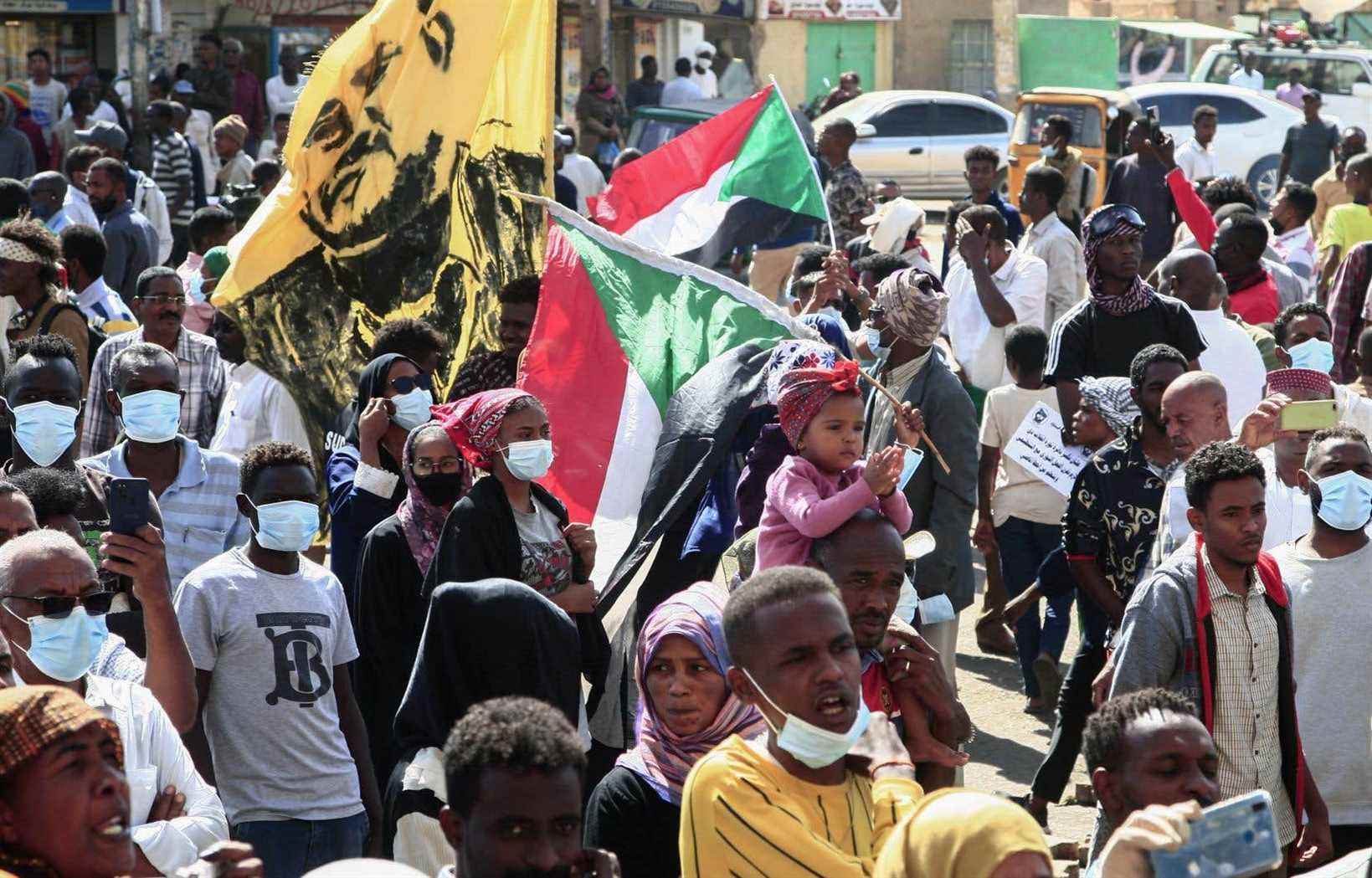Thousands of Sudanese converge on Sunday at the presidential palace in Khartoum, braving tear gas canisters, cutting telecommunications and massive deployment of armed soldiers.
As with every demonstration, which has become regular since General Abdel Fattah al-Burhane’s coup d’état on October 25, the authorities once again tried, in vain, to nip the mobilization in the bud by erecting physical and virtual roadblocks.
Khartoum has been cut off from its suburbs for several days by containers placed across bridges over the Nile. The Internet and cell phones have stopped working since morning and, on the main roads, members of the security forces perched on armored vehicles armed with heavy machine guns keep watch on passers-by.
But thousands of Sudanese nevertheless responded at midday to the call from activists to demonstrate “in memory of the martyrs”.
Because if 54 people have been killed and hundreds injured since the putsch, the country experienced a new peak of violence on Thursday, with six demonstrators killed in Khartoum according to a union of pro-democracy doctors.
Violence which took place behind closed doors that day because in addition to cutting the country off from the world and Khartoum from its suburbs, officers in regular uniform arrested and even beaten journalists from two Saudi channels.
“The soldiers at the barracks”
On Sunday again, they were however thousands to march to the cries of “The soldiers in the barracks” and “The power to the people”, while young people on motorcycles crisscrossed the crowd, ready to embark the wounded, because with each mobilization ambulances are blocked by security forces.
Activists call for making 2022 “the year of continued resistance”, demanding justice for the dozens of demonstrators killed since the putsch, but also for the more than 250 civilians killed during the “revolution” of 2019.
That year, popular pressure forced the army to dismiss one of its own, Omar al-Bashir, after thirty years of military-Islamist dictatorship.
So generals and civilians agreed on a transitional timetable that called for handing over all power to civilians before free elections in 2023.
But on October 25, General Burhane reshuffled the cards: he extended with what he calls his “correction of the course of the revolution” his de facto mandate at the head of the country for two years and reinstalled a month later the Civilian Prime Minister Abdallah Hamdok. The latter has not appeared in public for days as rumors of resignation keep swelling.
Because the new power is still struggling to present to the 45 million Sudanese the civilian government that it promised at the end of November by releasing Mr. Hamdok from house arrest.
“Neither partnership nor negotiation”
In a country almost always under the rule of the army since its independence 65 years ago, the demonstrators, them, proclaim: “neither partnership, nor negotiation” with the army “. “
Opposite, an adviser to General Burhane ruled on Friday that “the demonstrations are only a waste of energy and time” which will not lead to “any political solution”.
Once again on Sunday, the Sudanese authorities will be observed by the international community which denounces an escalation.
In addition to the deaths and the shutdown of the telephone and Internet, the security forces are also accused of having resorted in December to a new tool of repression: the rape of at least 13 demonstrators, according to the UN.
In addition, every day and in each neighborhood, the Resistance Committees, the small groups that organize demonstrations, announce new arrests or disappearances from their ranks.
Europeans have already expressed their outrage, as have US Secretary of State Antony Blinken and the UN. All regularly plead for a return to dialogue as a prerequisite for the resumption of international aid cut after the putsch in this country, one of the poorest in the world.
